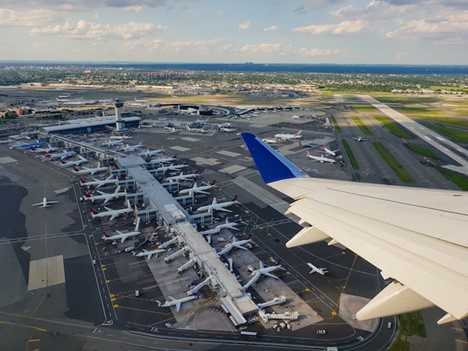
In the dynamic realm of aviation, the future of air traffic control (ATC) is undergoing a transformative shift, driven by cutting-edge technologies and a surge in global air travel. As we navigate through the clouds of innovation, the aviation industry is poised for a revolution in ATC practices. Below, William Boos of Direct Airway delves into the emerging trends and technologies that are shaping the future of air traffic control, while also addressing the challenges and opportunities that lie ahead.
The Rise of Digital Towers and Remote Operations
One of the most significant advancements in air traffic control is the emergence of digital towers. Traditionally, air traffic control towers have been a staple at airports, providing controllers with a visual line of sight to monitor aircraft movements on the ground and in the airspace. However, digital tower technology is changing this landscape.
Digital towers employ high-definition cameras and sensors to capture a comprehensive view of the airfield and airspace. This visual data is then transmitted to a remote location where controllers can manage air traffic without being physically present at the airport. This technology enhances efficiency, reduces costs, and allows for flexible deployment of air traffic control services.
Automation and Artificial Intelligence
Automation and artificial intelligence (AI) are integral components of the future ATC landscape. AI algorithms are being developed to analyze vast amounts of data quickly, aiding controllers in making informed decisions. Machine learning algorithms can predict air traffic patterns, identify potential conflicts, and optimize route planning for enhanced safety and efficiency.
Automation is also playing a crucial role in routine air traffic management tasks. Automated systems can assist controllers in managing routine operations, allowing them to focus on more complex decision-making processes. However, striking the right balance between automation and human control remains a challenge, as maintaining a human touch is vital for handling unexpected situations.
Integration of Unmanned Aircraft Systems (UAS)
The proliferation of unmanned aircraft systems (UAS), commonly known as drones, is reshaping airspace management. Integrating drones into controlled airspace requires innovative solutions to prevent conflicts with traditional manned aircraft. New technologies are being developed to ensure the safe coexistence of manned and unmanned aircraft.
Detect and avoid (DAA) systems equipped with advanced sensors enable drones to sense and react to nearby aircraft, minimizing the risk of collisions. Additionally, UAS Traffic Management (UTM) systems are being developed to manage drone traffic and provide real-time information to both drone operators and traditional ATC.

Cybersecurity Concerns
As the aviation industry becomes more reliant on digital technologies, the threat of cybersecurity breaches looms large. Ensuring the integrity of communication networks, data storage, and control systems is paramount for maintaining the safety and security of air traffic control operations.
Protecting against cyber threats requires constant vigilance and the implementation of robust cybersecurity measures. This includes encryption protocols, regular system audits, and collaboration with cybersecurity experts to fortify the digital infrastructure of air traffic control systems.
Environmental Sustainability in Air Traffic Control
The aviation industry is under increasing pressure to reduce its environmental impact. Air traffic control plays a role in achieving these sustainability goals by optimizing flight paths, reducing fuel consumption, and minimizing emissions.
Advanced algorithms are being developed to optimize aircraft trajectories, considering factors such as weather conditions, air traffic congestion, and fuel efficiency. By strategically planning flight paths, air traffic control contributes to minimizing the carbon footprint of air travel.
Challenges and Opportunities
While these innovations hold immense promise, they also present challenges. Regulatory frameworks need to adapt to the rapidly changing technological landscape. Collaboration among industry stakeholders, regulators, and technology providers is essential to establish standardized practices and ensure a seamless transition to the future of air traffic control.
As we embark on this journey toward a technologically advanced and sustainable aviation future, the opportunities for improving safety, efficiency, and environmental impact are vast. The evolution of air traffic control stands as a testament to the industry’s commitment to embracing innovation and meeting the challenges of an ever-changing sky.


